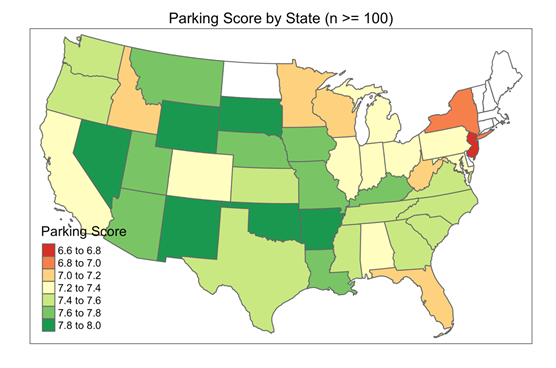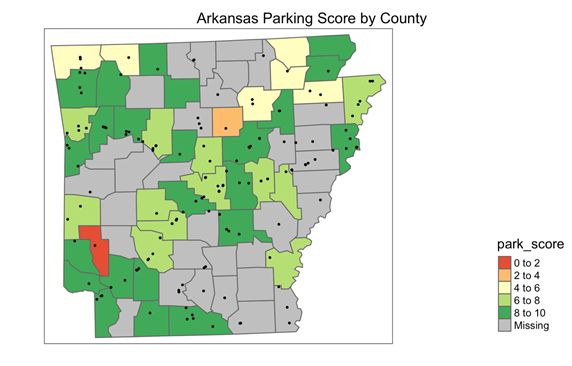
Twenty years ago, the Federal Highway Administration published a study highlighting the inadequacies of U.S. truck parking infrastructure. The report identified a truck parking shortage that endangered truck drivers and the general public by forcing truckers to drive while tired as they searched for parking or park in unsafe locations, such as on the shoulder of the highway.
Two decades later, the parking shortage is still a problem, but help may be on the way. If Congress passes the Truck Parking Safety Improvement Act later this year, it will provide states with $755 million to expand and improve their truck parking infrastructure.
That money will make a significant difference — if policymakers spend the money the right way. What is the right way? A group of researchers from truck monitoring firm EROAD and the University of of Arkansas’ Freight Transportation Data Research Lab may be able to help answer that question.
EROAD’s Gareth Robins, Yin Long, and Nishita Balamuralikrishna recently partnered with the U of A’s Sarah Hernandez and Sanjeev Bhurtyal to create a system for measuring the quality of each state’s truck parking infrastructure. After analyzing anonymous truck GPS data and electronic driver logs, the system assigns a Parking Score based, largely, on how often drivers are able to find safe, adequate parking within their allotted hours of service (HOS).
Hours of Service
HOS are an important consideration when assessing parking infrastructure. If drivers must exceed their daily HOS limit to find a designated parking area with available space, they may be at greater risk of crashing — researchers have found that fatigue-related accidents become much more likely after 9.5 hours of driving. Drivers who exceed HOS limits to find parking also risk being ticketed if their trip does not meet the Federal Motor Carrier Safety Administration’s definition of personal conveyance.
On the flip side of the HOS issue, concerns over parking availability can cause drivers to “take what they can get” and park well before they use up their allotted hours, limiting their earning potential and making supply chains needlessly inefficient.
Parking Scores
If the Truck Parking Safety Improve Act passes, federal policymakers will have to decide how to divide the funds between states. The EROAD/U of A team applied their model to the 48 contiguous states, producing results that could help federal officials prioritize funding.
The map below shows state level Parking Scores. Since 10 would be a perfect Parking Score and no state scored above an 8, it is clear that every state has truck parking issues. But some have bigger problems than others.

The system can also analyze truck parking infrastructure at the county level. That means it could help states write impactful funding requests if the Truck Parking Safety Improvement Act passes — and spend the funds wisely once they receive them. The map below shows Parking Scores for Arkansas counties.

Part of the Solution?
While the EROAD/U of A system could help assure that federal funds go where they are most needed, officials would also want to consider information from computer-based models such as those Sarah Hernandez and her students create in the Freight Transportation Data Research Lab.
Hernandez notes that parking infrastructure is part of a system, so changes in one county may produce unexpected ripple effects counties away.
“Let’s say you have enough money to improve five facilities. Should they be the five most overcrowded facilities? Because if you add 100 spaces to the most overcrowded facility and more drivers choose to park there, the second most overcrowded facility may no longer be the second most overcrowded. Now you’ve displaced the demand somewhere else… modeling can predict those shifts.”







